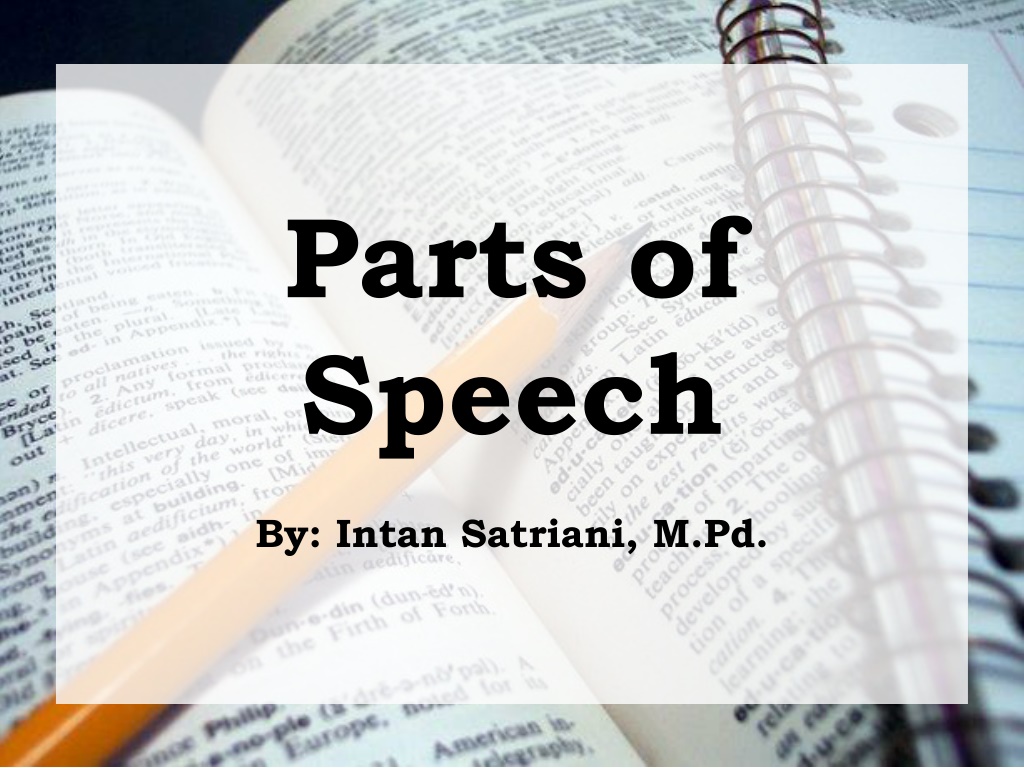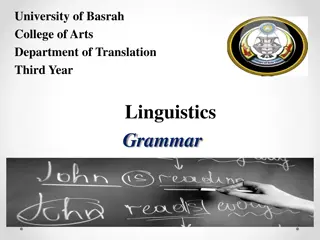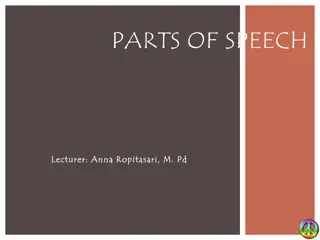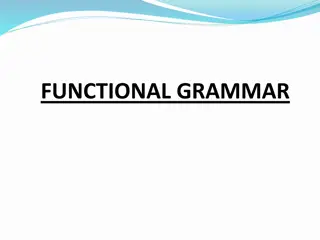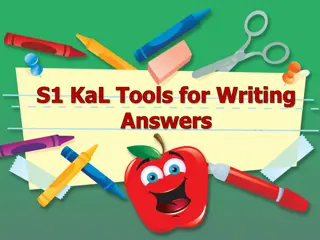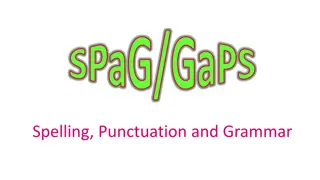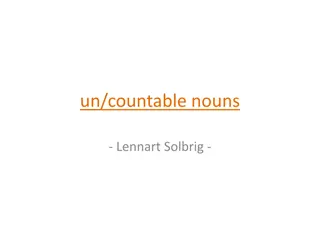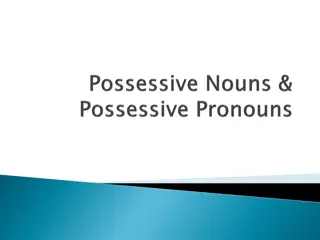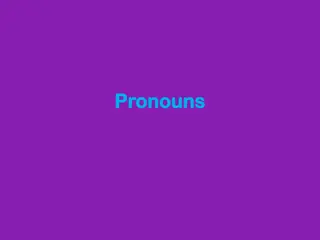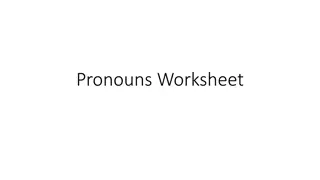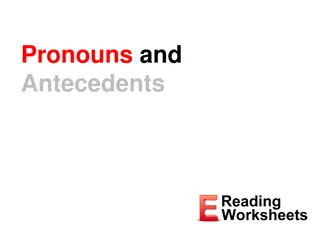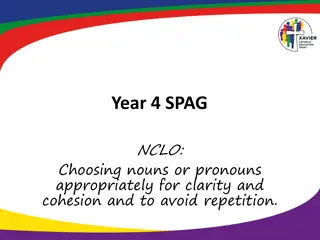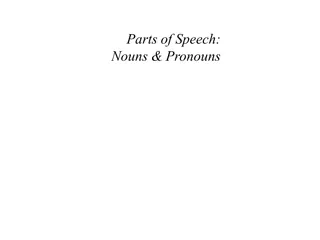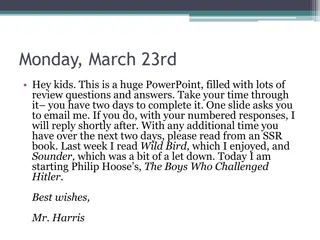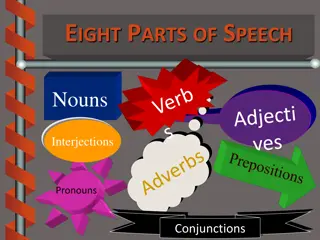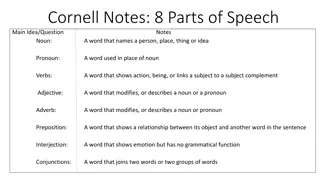Understanding Parts of Speech: Nouns, Pronouns, and Verbs
Learn about different parts of speech with examples. Understand nouns referring to people, places, and things, pronouns used in place of nouns, and verbs expressing actions or states of being. Discover how these elements function within sentences and improve your grasp of grammar concepts.
Download Presentation

Please find below an Image/Link to download the presentation.
The content on the website is provided AS IS for your information and personal use only. It may not be sold, licensed, or shared on other websites without obtaining consent from the author. Download presentation by click this link. If you encounter any issues during the download, it is possible that the publisher has removed the file from their server.
E N D
Presentation Transcript
Parts of Speech By: Intan Satriani, M.Pd.
A noun refers to a person, place, and thing. In addition, nouns name qualities, feelings, concepts, activities, and measures. Noun s function both as subjects and as objects of verbs To determine whether a word is really a noun, try using it with is or are. Example: Stephanie is young, chicago is in Illinois, horses are beautiful, dancing is fun.
Persons : Stephanie, Dr. Satriani, teacher, accountant Places : Chicago, island, Italy, college Things : novel, surfboard, bicycle, horse Qualities : Patience, honesty, initiative, enthusiasm Feelings : Happiness, anger, confusion, sadness Concepts : Knowledge, freedom, friendship, travel Activities : Snowboarding, dancing, management, eating Measures : day, week, inch, kilometer, million
Pronouns are words used in place of nouns. They also as noun substitute. as subjects of verbs (example: I, we, they) as objects of verbs (example: me, us, them) as connectors (example: that, which, who) show possession (example: mine, ours, hers, theirs) Exceptions: Words such as his, my, her, and its are classified as adjectives when describes nouns (his car, my desk, its engine)
Verbs express an action, an occurence or a state of being. Action runs, studies, and works State of being : State of being generally link to the subject words that describe or rename it. am, is, are, was, were, be, being, and been Linking verbs : They express the senses feels, appears, tastes, sounds, seems, looks : Show the action of a sentence
Examples Jason builts an excellent Web site. (Action) It has many links. (Occurence) He is proud of it. (State of being) Stacy submitted her application to become a management trainee. (Action verb) Her resume is just one page long. (Linking verb) She has been training to become a manager. (Verb phrase) Stacy feels bad that she will be leaving her current colleagues. (linking verb and verb phrase)
Words that describe nouns or pronouns are called adjectives They often answer the questions What kind? How many? and Which one? Lists of adjectives: -Effective -Excellent -Expensive - Intelligent - Long - Sensitive - Small
Special group of adjectives called articles (a, an, the). Small, independent businesses are becoming numerous. (What kinds of businesses?) We have six franchises in four states. (How many franchises? How many states?) That chain of health clubs started as a small operation. (Which chain? What kind of operation?) He is energetic and forceful, while she is personable and deliberate. (What pronouns do these adjectives describe?)
Adverbs are words that modify (describe or limit) verbs, adjectives, or other adverbs. Adverbs often answer the questions When? How? Where? and To what extent?
Today we must complete the project. (Must complete the project when?) Mitch approached the intersection cautiously. (Approached how?) He seems especially competent. (How competent?) Did you see the schedule there? (Where?) The prosecutor did not question him further. (Questioned him to what extent?)
Prepositions join nouns and pronouns to other words in a sentence. A preposition is a word in a position before its object (a noun or pronoun). Prepositions are used in phrases to show relationship between the object of the preposition and another word in sentence. Frequently used preposition: at, by, for, from, in, of, to, and with
Brian often talked with Ms. Tokuyama. Brian often talked about Ms. Tokuyama. Brian often talked to Ms. Tokuyama.
Words that connect other words or groups of words are conjunctions. Yukie, Dan, and Kristi are all looking for jobs. (Joins equal words.) You may be interviewed by a human resources officer or by a supervising manager. (Joins equal groups of words.)
Words expressing strong feelings are interjections. Wow! Did you see what she wrote in her e- mail message? Oops! I forgot to send the attachment. Interjections standing alone are followed by exclamation marks. When woven into a sentence, they are usually followed by commas.
Lets Practice Well, I certainly will submit a r sum and application letter to them. 1. Our mail is late today. 2. This pile of mail must be delivered today. 3. Mail the letter today. 4. Your voice mail box is full.
